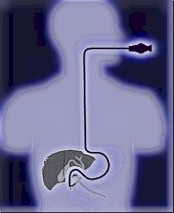Super-bugs turn Super-bad

The UCLA health system is warning patients that have had a doctor who specializes in gastroenterology there is a risk involved in using a duodenoscope to go into the stomach and sometimes beyond into the smaller intestine. The bacteria is called Carbapenem-resistant Enterobacteriaceae (CRE) or also known as a “super-bug” can get trapped inside the scope. The doctors, of course, disinfect the duodenoscope but it seems that the recommended sterilization is not enough. There have been seven patients that were infected and two of them became seriously ill and died.
You may have some questions about the CRE so let us help you answer them.
What is CRE?
CRE or Carbapenem-resistant Enterobacteriaceae refers to a family of drug-resistant bacteria that have evolved so that most antibiotics cannot kill them. This makes them into what are known as super-bugs. CRE normally lives in your cut but if it gets into the blood stream it can cause infections. The CRE germs kill half of their victims. There are other super-bugs that you may have head of including methicillin-resistant Staphylococcus Aureus (MRSA ) and Clostridium Difficile (C-diff).
 How Common Are They?
How Common Are They?
The CDC estimates that each year in the U.S. at least two million people become infected with the bacteria and at least 23,000 people die each year as a direct result of these infections. About one in every 25 hospital patients has at least one healthcare-associated infection, on any given day. There were an estimated 722,000 healthcare-associated infections in the United States acute care hospitals in 2011.
[one_fourth]
[/one_fourth][three_fourth_last]How Do People Catch CRE or Other Super-bugs?
Usually and sadly, hospitals are most common to catch the bacterias. These bacteria can take hold in the immune systems of very ill patients who cannot fight them off well. They then get stuck onto the equipment. Even though doctors go through all of the necessary procedures to clean the duodenoscope, bacteria can work themselves down into nooks and crannies and be very, very difficult to clean out.
Why Can’t Hospitals Do Something About It?
It is difficult and expensive to fight bacteria but many of them are trying. Bacterias can get into drains, onto cleaning equipment, carried on the hands and clothing of health workers. The worst part is that they are invisible. To keep them from spreading it requires tedious and time-consuming care including constant sanitizing and hand-washing.
Are There Any Drugs to Treat These Infections?
In reality, not many, but Carbapenems are considered an antibiotic of only last resort because germs that resist their effects are very difficult to kill. The bacteria which produces an enzyme called Klebsiella Pneumoniae Carbapenemase that makes a range of antibiotics ineffective. This includes beta-lactams, penicillins and cephalosporins.
So overall we just suggest if you ever need to have and Endoscopic retrograde cholangiopancreatography (ever need the doctors to check your stomach or intestines with a scope orally) just make sure that they clean it one last time before using it on you.







